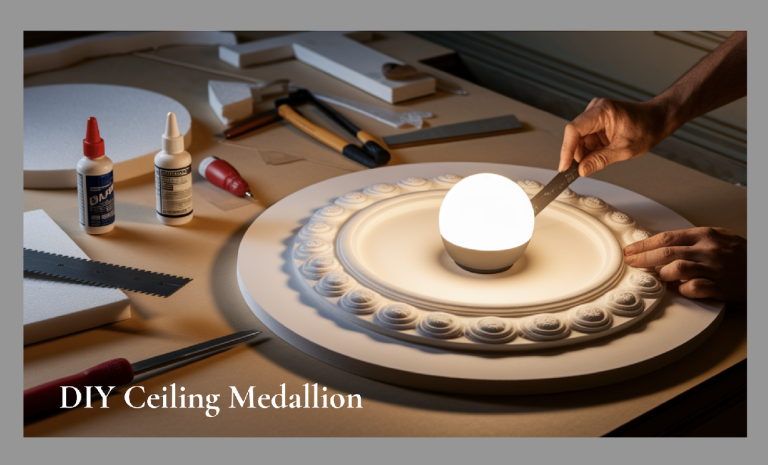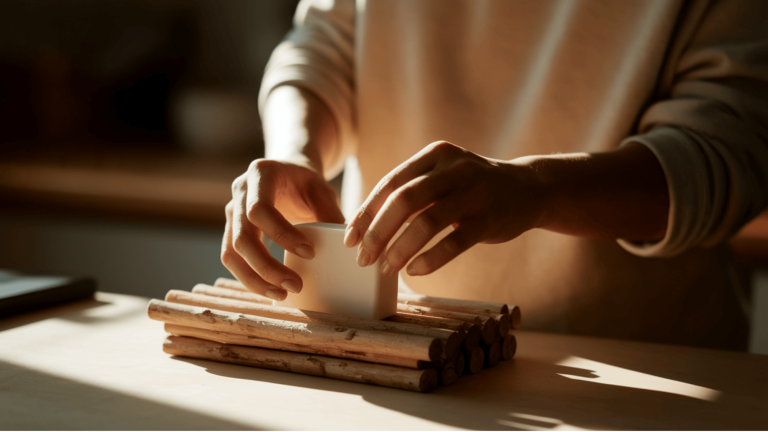Can I Use Acrylic Paint on Fabric?
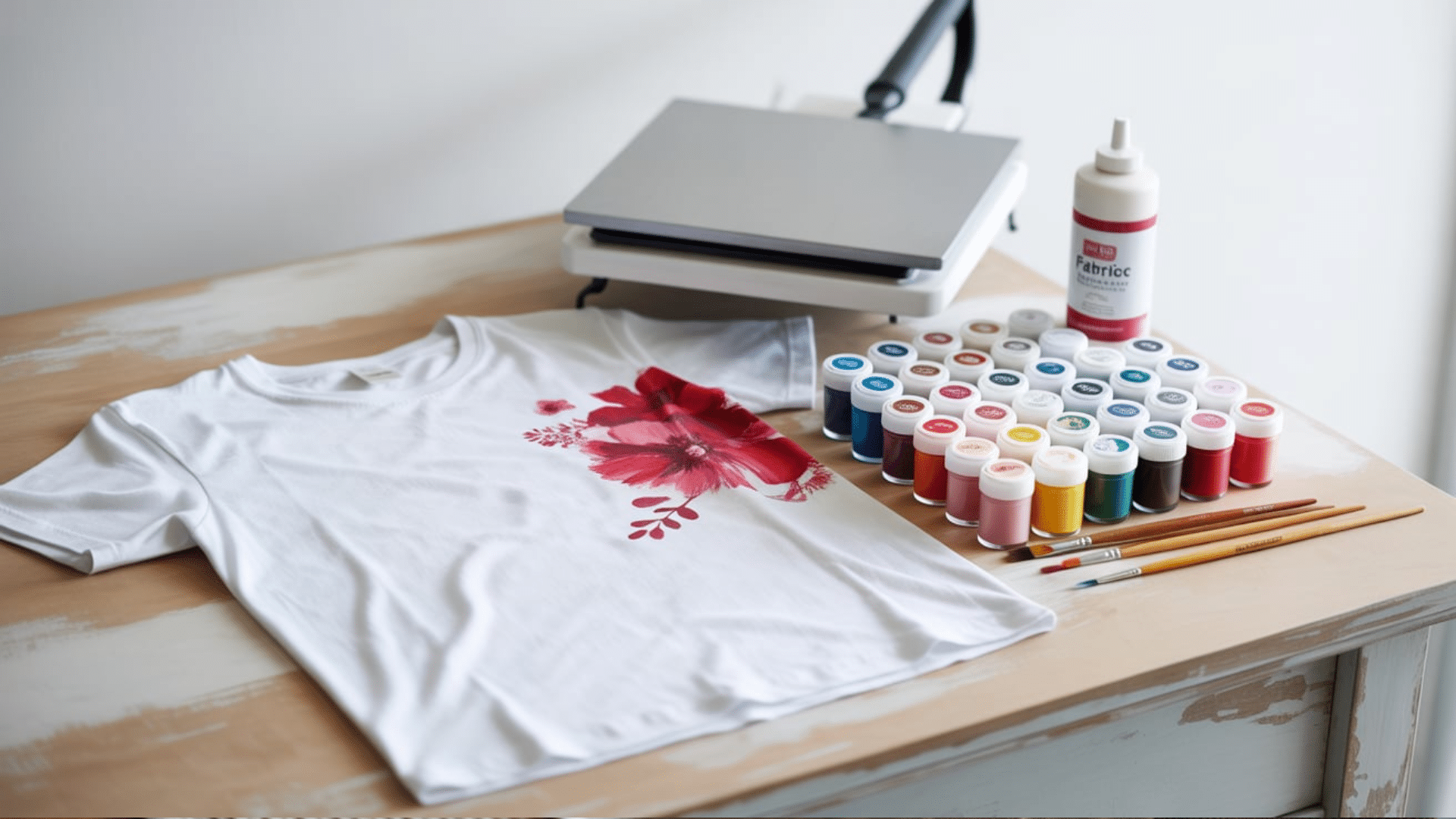
Ever found yourself staring at boring fabric and wishing you could jazz it up with some color?
Well, you totally can!
Regular acrylic paint can absolutely work on fabric, and you probably already have most of what you need at home.
No need to hunt down fancy fabric paints or break the bank on art supplies.
Whether it’s an old shirt that needs some personality, a plain canvas bag, or even home décor items, you can turn them into something that’s uniquely yours.
Here, we are going to walk you through exactly how to make fabric paint work like a pro, plus share some tricks to make sure your designs stay put through washes.
Why Use Acrylic Paint as Fabric Paint?
Acrylic paint is way more budget-friendly and comes in basically every color you can think of.
When you turn regular acrylic paint into fabric paint, you’re getting the best of both worlds.
You can use paints you already have lying around, pick from hundreds of color options, and create whatever designs pop into your head, all without spending a fortune.
From clothes to home décor to random craft projects, you’ll end up with fabric that stays soft and actually survives the washing machine.
What You Need Before You Start?
Gather these simple supplies to make your project smooth and stress-free.
- Acrylic paint (any color you like)
- Fabric medium(or DIY alternative)
- Paintbrush or foam brush
- Pre-washed fabric
- Cardboard/ freezer paper
- Iron/ heat press (for heat-setting)
How to Make Fabric Paint from Acrylic Paint?
Converting acrylic paint into fabric paint is a simple and enjoyable process when you follow the correct steps.
This process confirms your designs remain soft, vibrant, and washable without cracking or peeling over time.
Step 1: Mix Acrylic Paint with Fabric Medium
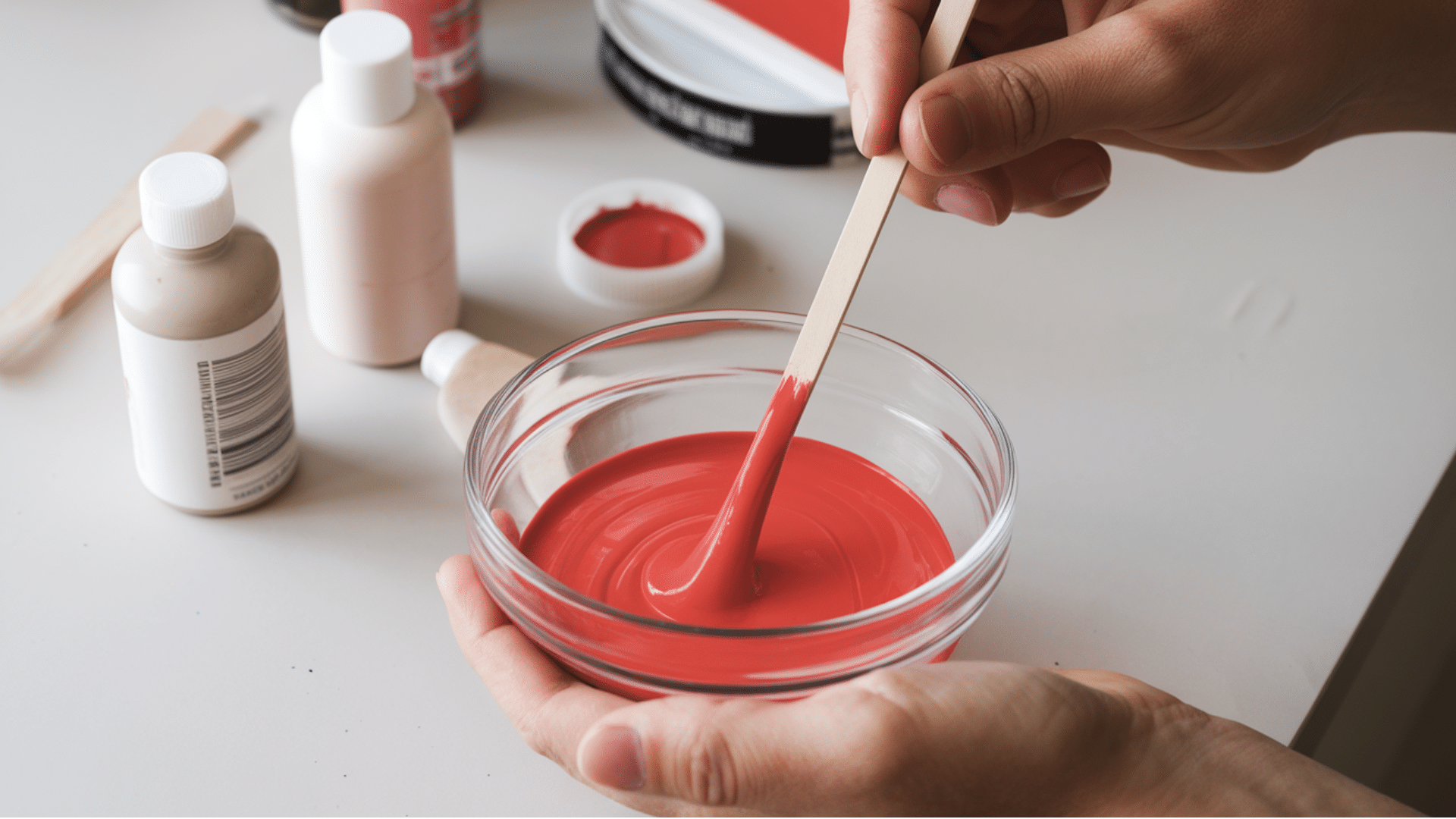
Combine two parts acrylic paint with one part fabric medium in a small bowl. Stir well until smooth and fully blended.
The fabric medium maintains the paint’s flexibility after drying and washing, preventing cracks and stiffness.
Without it, the paint will harden and break easily, so don’t skip this step for long-lasting results.
Step 2: Prepare the Fabric
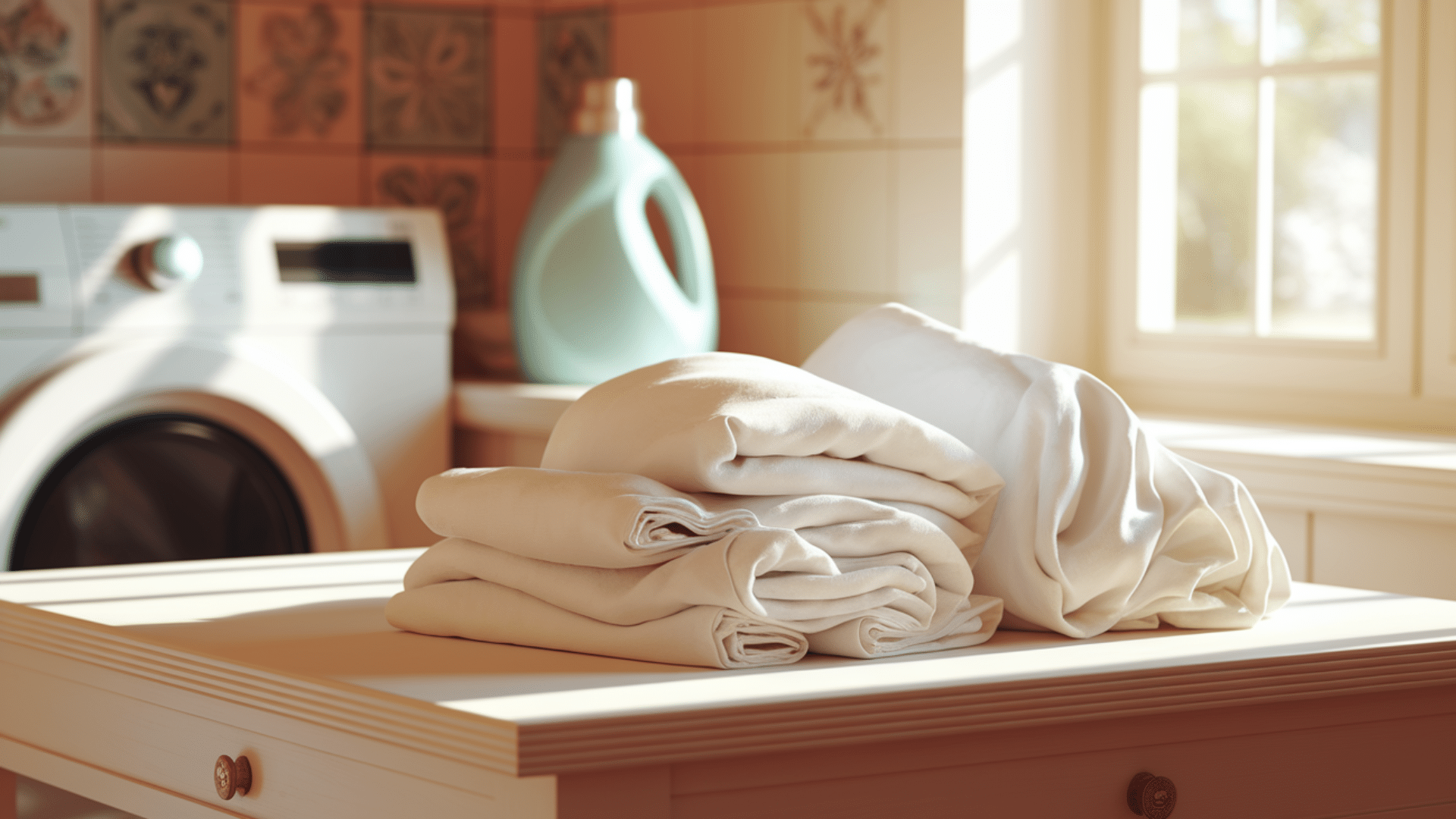
Wash and dry your fabric to remove dirt, oils, or sizing that block adhesion.
Skip fabric softener, as it creates a coating that prevents paint from sticking.
Light-colored cotton fabrics are best because they absorb paint well, making colors appear brighter.
Prepping the fabric ensures your design lasts and doesn’t peel after washing.
Step 3: Apply the Paint

Insert cardboard or freezer paper between fabric layers, similar to the inside of a T-shirt, to prevent paint from bleeding through.
Use a paintbrush, foam brush, or stencil for neat designs.
Apply thin, even coats instead of thick layers to maintain the fabric’s softness.
Let each coat dry before adding another to avoid cracks and clumps.
Step 4: Let It Dry Completely
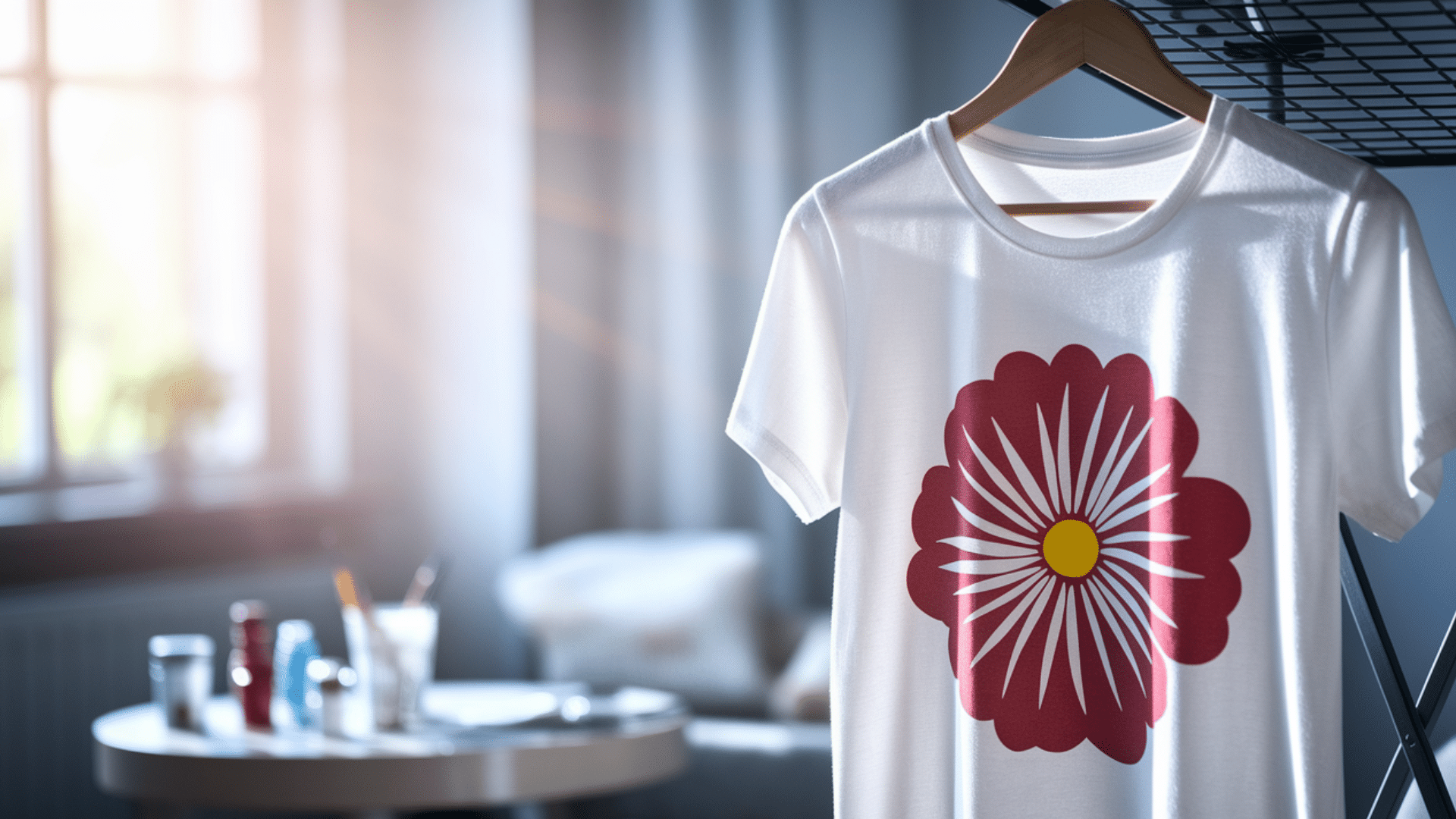
After painting, let your fabric dry in a well-ventilated area for at least 24 hours.
This drying period allows the paint to fully bond with the fibers, making the design strong and washable.
If you rush this step, heat-setting may not work correctly, and the paint could peel.
Step 5: Heat-Set the Design
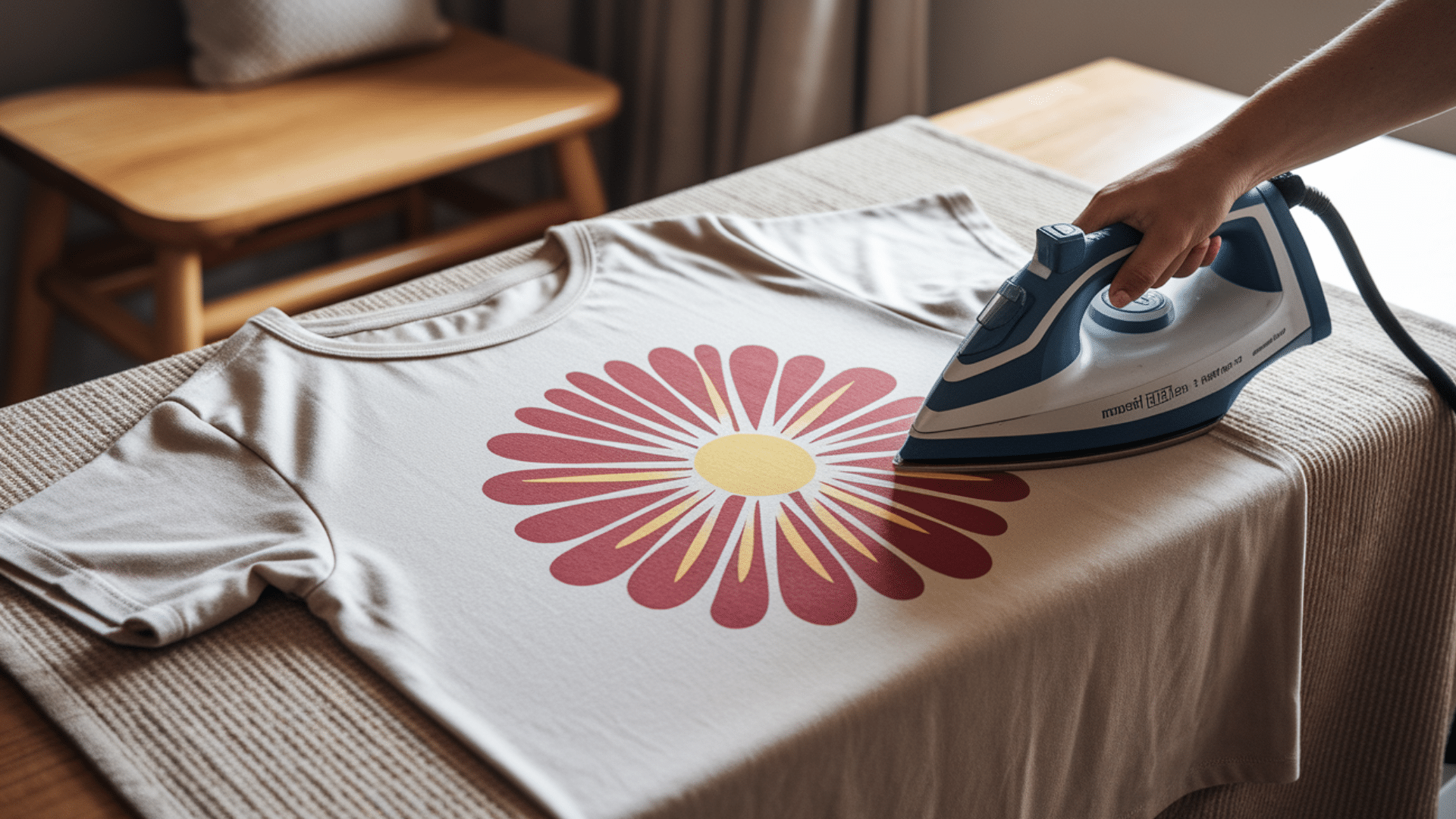
Once dry, heat-setting locks the paint into the fabric, allowing it to withstand washing.
Place a pressing cloth over the design and iron on medium heat for 3–5 minutes, keeping the iron moving to avoid burns.
For a heat press, please set it to 300°F for 30 seconds. Never use steam. It weakens the bond between paint and fabric.
Use light cotton, mix extra paint, heat-set properly, wait 72 hours, and wash gently for vibrant, long-lasting designs.
Acrylic Paint vs. Fabric Paint
Let’s break down what happens when you use regular acrylic paint compared to mixing it with fabric medium.
| FEATURE | ACRYLIC ALONE | ACRYLIC + FABRIC MEDIUM |
|---|---|---|
| Flexibility | Low | High |
| Washability | Poor | Excellent |
| Cost | Low | Still Low |
As you can see, adding fabric medium doesn’t cost much more but completely changes how your paint behaves on fabric.
Without it, you are basically painting with something that’ll crack and wash out.
DIY Alternatives to Fabric Medium
Can’t find fabric medium? Try these simple options:
1. Glycerin Mix
Combine 1 part vinegar, 1 part glycerin, and 2 parts water. Mix this solution with acrylic paint in equal parts.
It helps make the paint softer and more flexible, reducing cracks after drying.
2. Glue and Shaving Cream Mix
Mix 3 tablespoons of shaving cream with 1 tablespoon of school glue, then add acrylic paint for color.
This creates a puffy paint effect, ideal for fun or kid-friendly projects.
Note: This method is less durable than store-bought fabric medium.
Common Mistakes to Avoid During Painting
Even simple fabric painting can go wrong if you skip a few key steps.
Here are the biggest mistakes that can ruin your project before you even finish:
- Skipping Pre-Wash: Dirt and chemicals reduce paint adhesion.
- Using Too Much Paint: Thick layers lead to stiff fabric and cracking.
- Forgetting the Fabric Medium: Plain acrylic paint will wash out and feel rough.
- Painting on Wet Fabric: Moisture causes paint to bleed and spread unpredictably.
- Skipping Heat-Setting: Without it, your design won’t last through washing.
The Bottom Line
Last but not least, using acrylic paint on fabric isn’t just possible, it’s actually pretty simple once you know the tricks!
Here, you have learned how to prepare your paint, apply it properly, and make sure it stays looking great wash after wash.
The possibilities are endless, and the supplies are probably sitting in your craft drawer right now.
So next time you see a piece of plain fabric, don’t just walk by; grab your brushes and make it yours.

